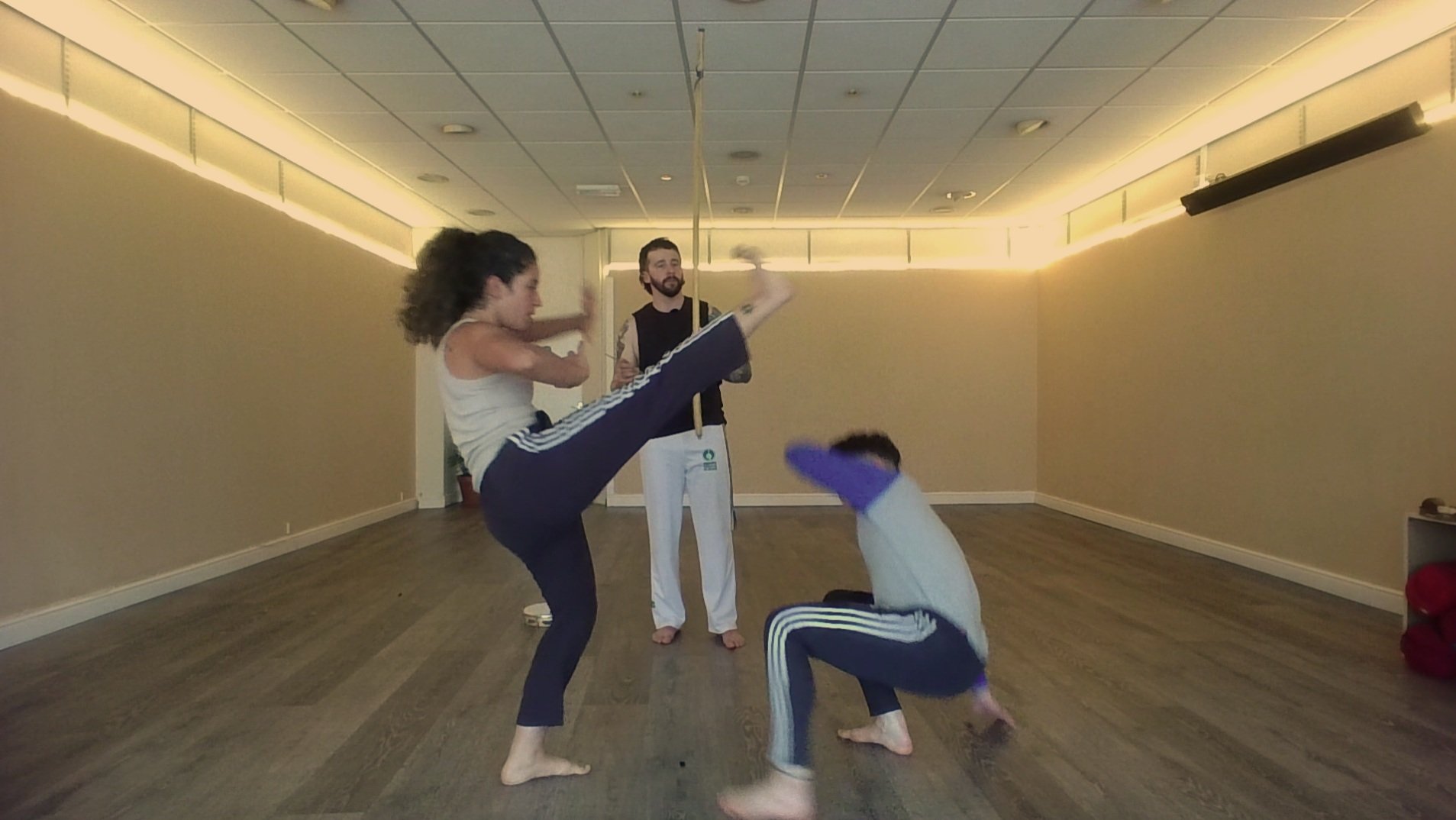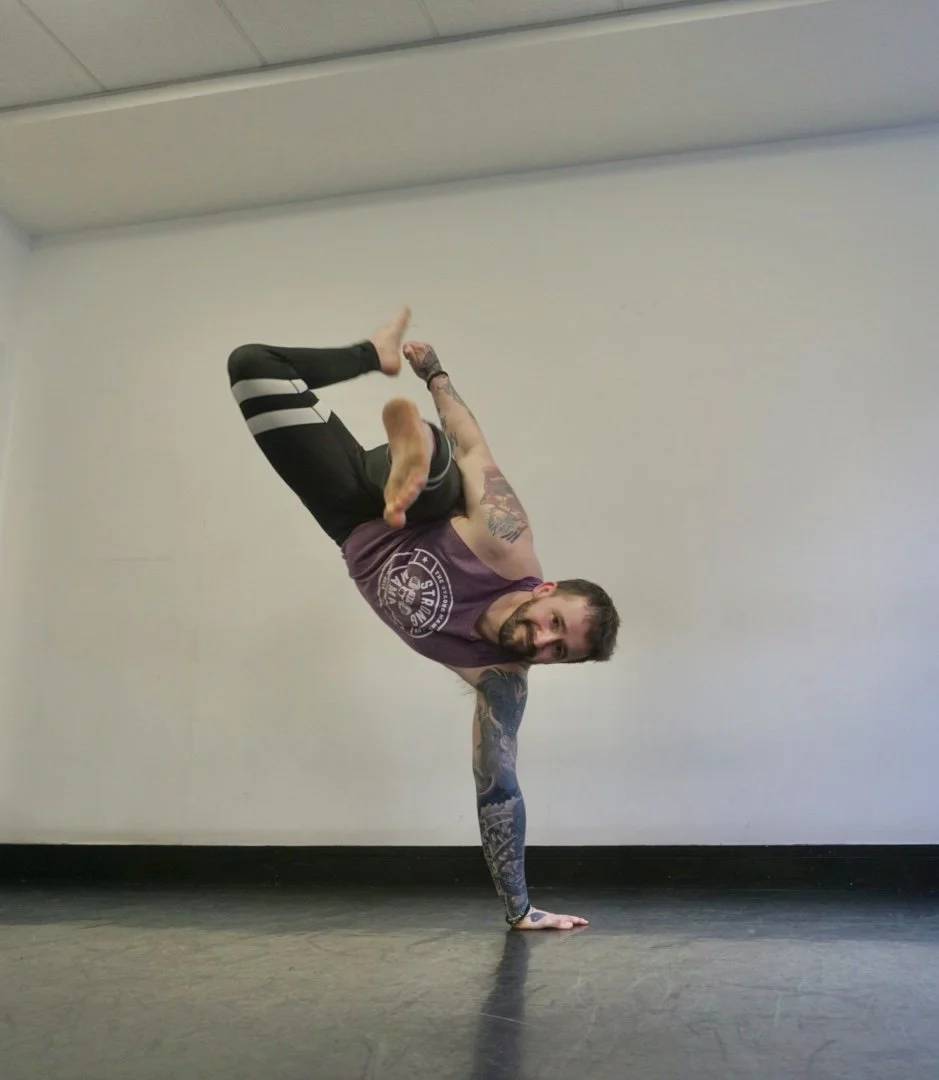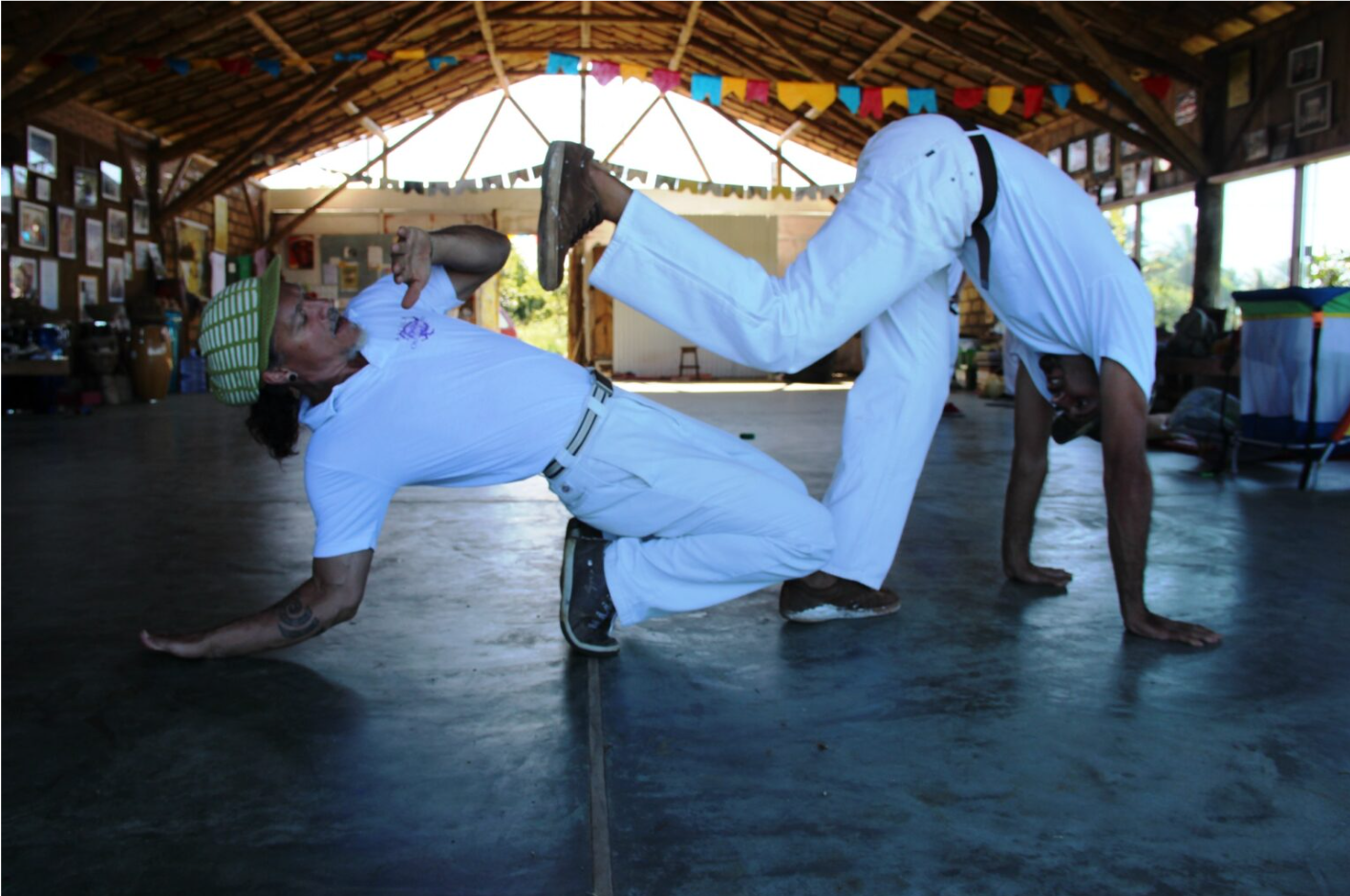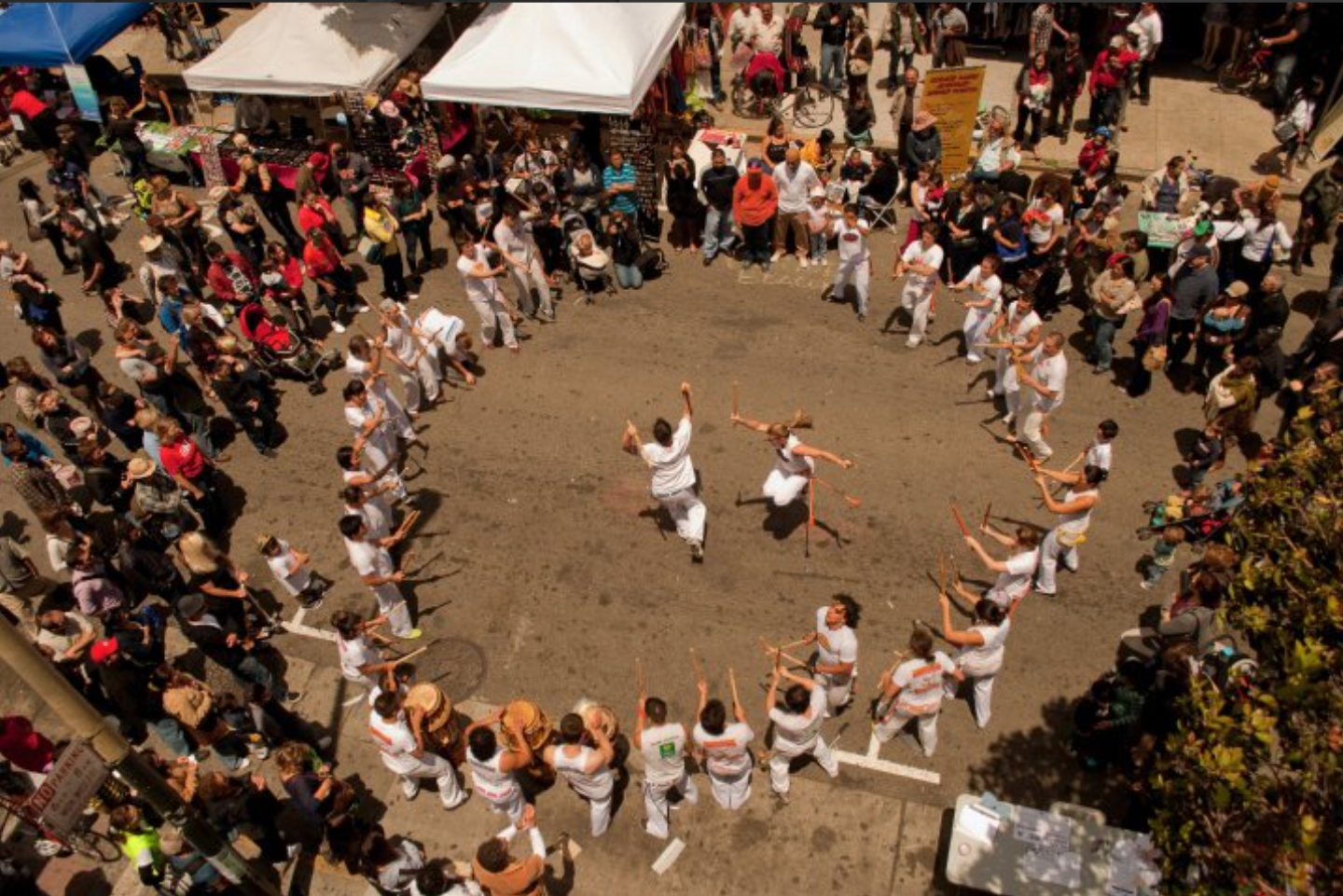
This is Capoeira
Capoeira is a Brazilian martial art that combines elements of dance, acrobatics, music, and fighting techniques. It was developed by African slaves in Brazil during the 16th century as a way to practice self-defense while disguising it as a form of dance to avoid detection by their oppressors. Over time, it evolved into a rich cultural tradition that is both a physical discipline and a social and cultural expression.
Our teacher
Elliott (Dragão) Northrop
Salve!
My name is Elliott Northrop, aka Dragao within the Capoeira community, and I'm a capoeira practitioner and teacher within the Greater Manchester area.
I have been practicing capoeira since 2009 and have been teaching for almost a decade after moving to the Manchester area in 2015.
I have also branched out from teaching to give capoeira culture workshops in schools, provide intensive courses to dance schools, performed at a number of community festivals as well as organise and support Brazilian and Latin American culture weeks.
Key Features of Capoeira:
Movements: Capoeira is known for its fluid, acrobatic movements and quick, evasive maneuvers. Practitioners (known as "capoeiristas") use a combination of kicks, sweeps, spins, and flips, often moving in a circular pattern.
Music: Music is integral to capoeira, setting the rhythm and pace of the game (called "jogo"). Traditional instruments include the berimbau (a single-string percussion instrument), atabaque (a type of drum), and pandeiro (a type of tambourine). Capoeiristas also sing call-and-response songs that often tell stories or convey messages.
3. Roda: (pronounced “ho-da”) Capoeira is typically practiced in a "roda," a circle formed by participants who clap and sing while two capoeiristas perform in the center. The game within the roda is a dialogue of movements between the two players, blending cooperation and competition.
The two players within the roda draw energy and support from those around them. Serving as a metaphor for the circle of life, the capoeira roda demonstrates that every individual plays a crucial role in creating a unified whole, emphasizing the importance of cooperation.
4. Styles: There are two main styles of capoeira:
Capoeira Angola: This is the traditional style, characterized by slower, more strategic movements and a strong emphasis on ritual and tradition.
Capoeira Regional: Developed in the 20th century by Mestre Bimba, this style is faster and more focused on athleticism and effectiveness in combat.
Contemporânea: A modern style of capoeira that blends elements from both traditional Capoeira Angola and the more contemporary Capoeira Regional. This style emerged in the mid-20th century as capoeira continued to evolve and spread globally. It incorporates a wide range of techniques, movements, and rhythms, making it more adaptable and versatile.
5. Cultural Significance: Capoeira has deep cultural roots, reflecting the history of resistance and resilience of Afro-Brazilian communities. It is recognized by UNESCO as an Intangible Cultural Heritage of Humanity.
Capoeira is more than just a martial art; it is a holistic practice that encompasses physical fitness, cultural expression, and community engagement.





